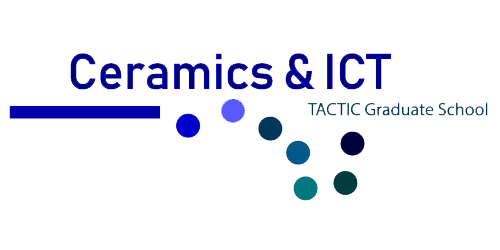- FR
- EN
Vous êtes ici
Séminaire XLIM : Séminaire Mme Mireille Blanchard-Desce
 Mme Mireille Blanchard-Desce, Directeur de Recherche CNRS à l’Institut des Sciences Moléculaires (UMR CNRS 5255) de l’Université de Bordeaux, donnera un séminaire ce Jeudi 26 Mai à 11h à XLIM, dans les salles XR203 et 203. L’exposé s’intitule « Hyper-bright nanoparticles made from molecules: new tools for bioimaging ». Ce séminaire s'inscrit dans le cadre de l'hôtel à projets Bioingénierie.
Mme Mireille Blanchard-Desce, Directeur de Recherche CNRS à l’Institut des Sciences Moléculaires (UMR CNRS 5255) de l’Université de Bordeaux, donnera un séminaire ce Jeudi 26 Mai à 11h à XLIM, dans les salles XR203 et 203. L’exposé s’intitule « Hyper-bright nanoparticles made from molecules: new tools for bioimaging ». Ce séminaire s'inscrit dans le cadre de l'hôtel à projets Bioingénierie.
Note pour les doctorants : pensez à vous inscrire sur la liste d’appel lors du séminaire afin de faire valider votre participation auprès de l’école doctorale ED521 !
Venez nombreux !
Contact du séminaire : Frédéric Louradour (frederic.louradour@xlim.fr) / seminaires@xlim.fr
Résumé du séminaire (version pdf ici) : Among various probes, semiconductor quantum dots have been shown to provide a particularly powerful approach to luminescent nanoobjects for bioimaging purposes. However, these inorganic systems suffer from several drawbacks such as toxicity, blinking and raise a number of questions with respect to environmental issues (clearance, biodegradability…). With this in mind, we have developed molecular-based bottom-up approaches towards luminescent nanoparticles showing exceptional both one- and two-photon brightness. These fully organic nano-emitters of controlled nature are obtained from rational routes and differ from QDs in both their design and in the origin of their luminescent properties opening an innovative alternative avenue towards new nanoprobes for bioimaging. Two alternative and complementary routes will be presented. The first one is based on the control, at the single nano-object level, of the optical responses via the design of covalent molecular structures of highly confined chromophores within hierarchical architectures (dendrimers) in which interactions between chromophoric subunits are impeded and their relative positioning is fully controlled. This covalent bottom-up strategy led to tuneable nano-objects (typically 2-6 nm in radius) which can outcome semiconductor quantum dots in terms of brightness by orders of magnitude,[1], show cooperative enhancement of nonlinear absorption cross-sections,[2] and allow fast intra- and inter- nanodot excitation energy transfer in films[3a]. These tuneable, soft organic nanodots (ONDs) have been proven to be of major interest as luminescent nanoparticles for in vivo bioimaging[3b-c] as well for sensitive detection of explosives.[3a].
The second route is based on the spontaneous assembly of specially designed multipolar insoluble dyes in water. This non-covalent approach led to Fluorescent Organic Nanoparticles (FONs) showing record one- and two-photon brightness (up to 108 M-1cm-1 and 106 GM).[4] Interestingly, in such molecular-based nanoparticles, both the luminescence and the nonlinear optical responses can be tuned and enhanced via molecular confinement control.[4c] These luminescent molecular-based nanoparticules (having radius of 5-50 nm) can be readily prepared using simple, expeditious and green protocols. Their color, biocompatibility, colloidal and structural stability can be tuned thanks to a subtle bottom-up strategy, yielding biocompatible ultrasensitive nanotracers for in vivo two-photon angiography.[4a] This approach also opens the way to markedly enhanced photostability resulting in innovative multicolor FONs (including Hyperbright NIR-emitting FONs named HiFONs[4b]) which can be used for multicolor single particle tracking within cells.[5] Finally, striking luminescence enhancement and spatial confinement at the nano-interface can be achieved in core-shell binary nanoparticles made from dedicated complementary dyes, in relation with the generation of large interfacial electric fields. This opens an intriguing route towards “molecular plasmonics”.[6]
[1] a) M. Blanchard-Desce, M. Werts, O. Mongin, J.-P. Majoral, A.-M. Caminade, R. K. Thatavarthy, PCT Int. Appl., 2007, WO 2007080176; b) O. Mongin, C. Rouxel, J.-M. Vabre, Y. Mir, A. Pla-Quintana, Y. Wei, A.-M. Caminade, J. P. Majoral, M. Blanchard-Desce, Proc. SPIE-Int. Soc. Opt. Eng, 2009, 7403, 740303-1-12; O. Mongin, R. K. Tathavarty, M. H. V. Werts, A.-M Caminade, J-P. Majoral, M. Blanchard-Desce, Chem. Commun., 2006, 915-917
[2] F. Terenziani, V. Parthasarathy, A. Pla-Quintana, T.;Maishal, A.-M. Caminade, J.-P. Majoral, M. Blanchard-Desce, Angew. Chem. Int. Ed., 2009, 48, 8691-8694.
[3] a) A. Narayanan, O. Varnavski, O. Mongin, J.-P. Majoral, M. Blanchard-Desce, T. Goodson III, Nanotechnology, 2008, 19, 115502; b) T. R. Krishna, M. Parent, M. H. V. Werts, L. Moreaux, S. Gmouh, S. Charpak, A.-M. Caminade, J.-P. Majoral, M. Blanchard-Desce, Angew. Chem., Int. Ed. 2006, 45, 4645-4648; c) O. Mongin, C. Rouxel, A.-C. Robin, A. Pla-Quintana, Tathavarathy Rama Krishna, G. Recher, F. Tiaho, A. -M. Caminade, J.-P. Majoral, M. Blanchard-Desce, Proc. SPIE-Int. Soc. Opt. Eng. 2008, 7040, 704006, 1-12.
[4] a) V. Parthasarathy, S. Fery-Forgues, E. Campioli, G. Recher, F. Terenziani, M. Blanchard-Desce, Small, 2011, 7, 3219-3229; b) E. Genin, Z. Gao, J. A. Varela, J. Daniel, T. Bsaibess, I. Gosse, L. Groc, L. Cognet, M. Blanchard-Desce, Adv. Mater. 2014, 26, 2258-2261. c) J.-B. Verlhac, J. Daniel, P. Pagano, G. Clermont, M. Blanchard-Desce, C. R. Chimie, 2016, 19, 28-38.
[5] J. Daniel, A. Godin, M. Palayret, B. Lounis, L. Cognet, M. Blanchard-Desce, J. Phys. D: Appl. Phys., 2016, 49, 084002-084012.
[6] a) E. Campioli, C. Rouxel, M. Campanini, L. Nasi, M. Blanchard-Desce, F. Terenziani, Small, 2013, 9, 1982–1988; b) E. Campioli, D.-M. Nikolaidou, V. Hugues, M. Campanini, L. Nasi, M. Blanchard-Desce, F. Terenziani, J. Mater. Chem. C, 2015, 3, 7483-7491.












 UMR CNRS n°7252
UMR CNRS n°7252